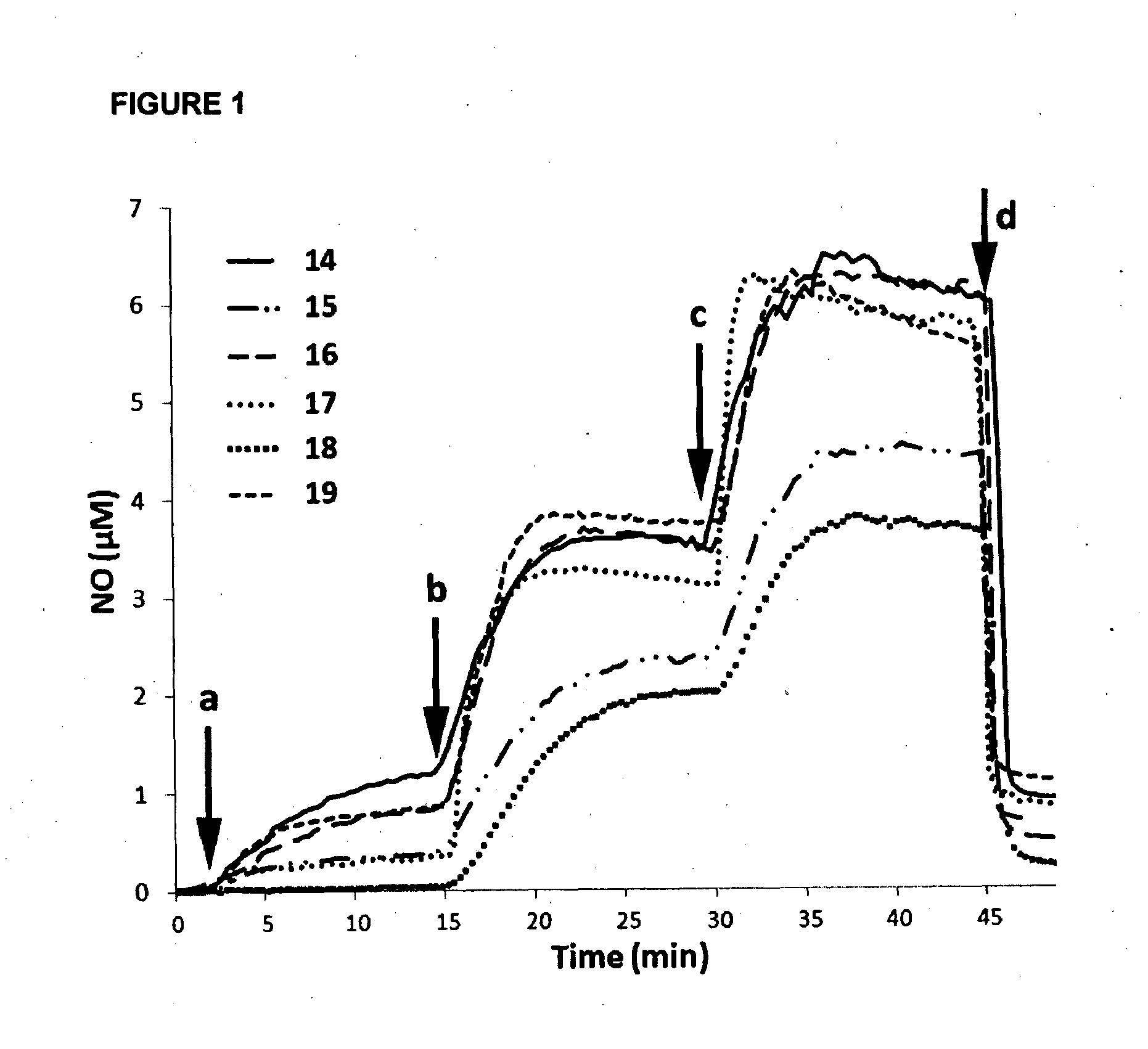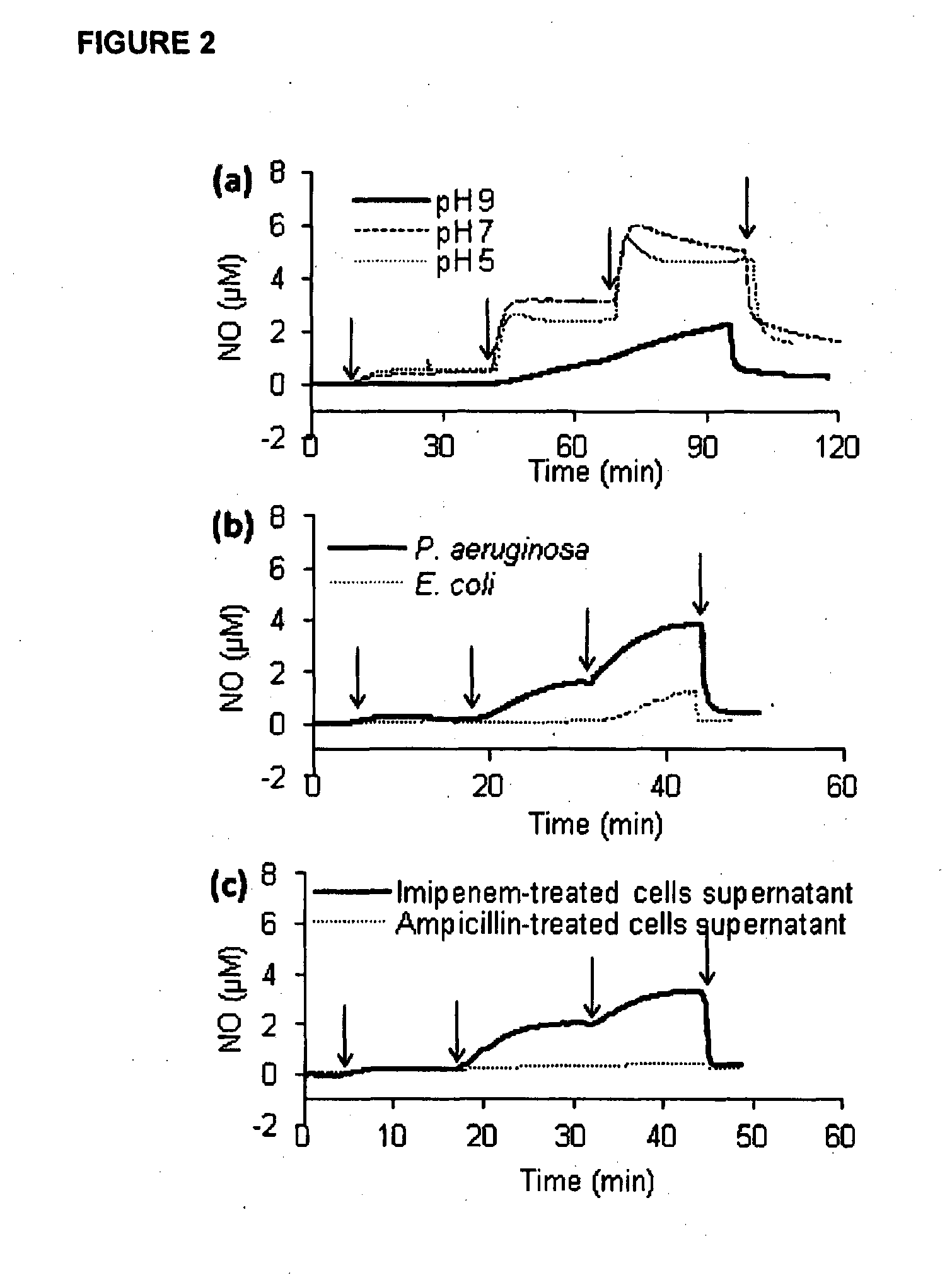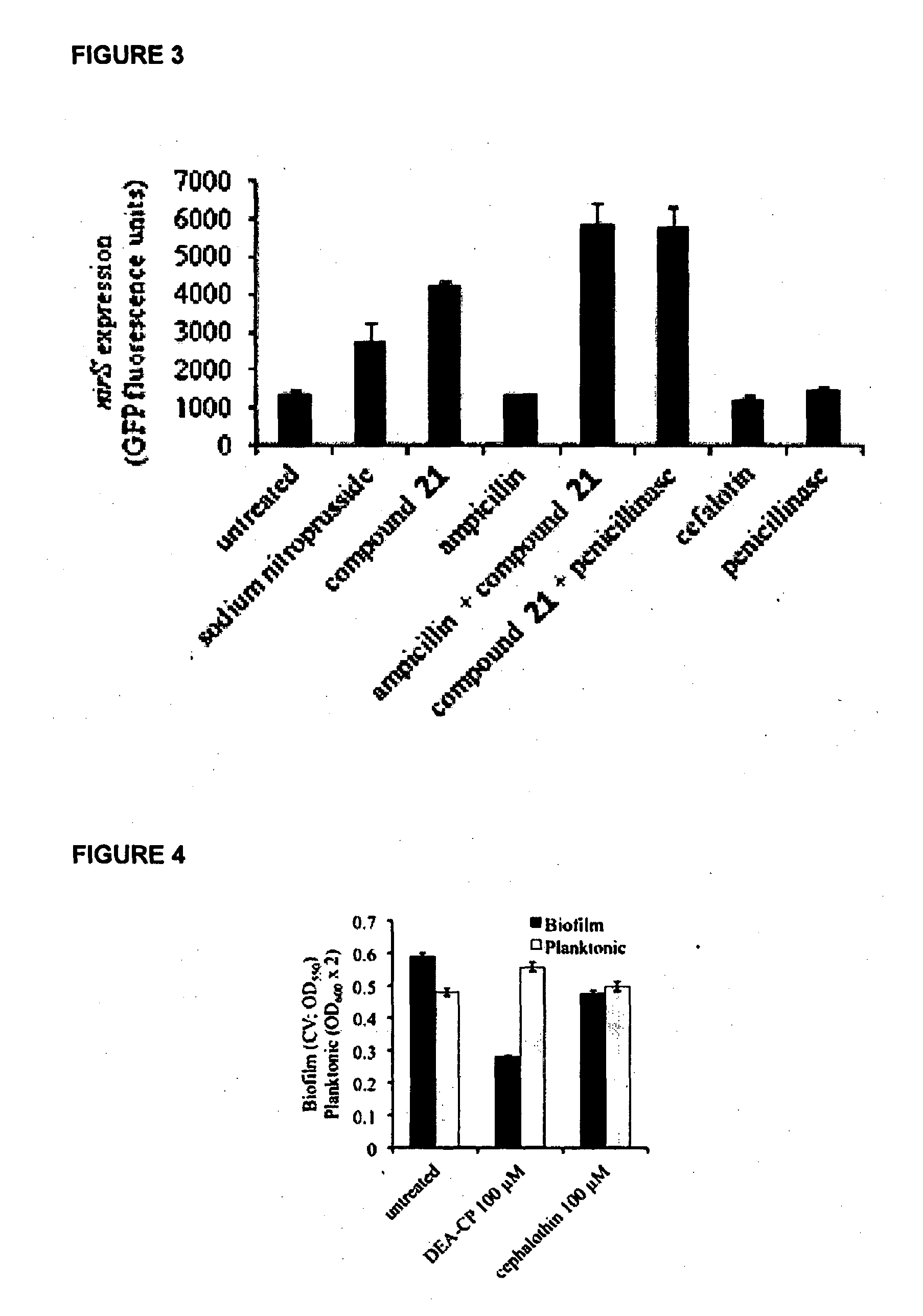Regulation of nitric oxide release and biofilm development
a technology of nitric oxide and biofilm, which is applied in the direction of biocide, drug composition, antibacterial agents, etc., can solve the problems of increasing health system costs, significant industrial damage, fouling and corrosion, etc., and achieves the effect of promoting the dispersal or preventing the formation of biofilms and increasing the sensitivity of microorganisms
- Summary
- Abstract
- Description
- Claims
- Application Information
AI Technical Summary
Benefits of technology
Problems solved by technology
Method used
Image
Examples
example 1
Synthesis of Compounds
[0159]The following representative compounds of the formula (I) were synthesised:
[0160]The compounds were synthesised according to Scheme 4:
[0161]The first step in the synthesis of compounds 14 to 25 involved preparation of cephalosporin-3′-diazeniumdiolates 3 and 9-13 by reaction of appropriately functionalised PMB-protected cephalosporins 1, 4 and 5 with appropriately functionalised diazeniumdiolates 2 and 6 to 8, as shown below:
StartingSodiumPro-Yieldmaterial, R1Diazeniumdiolate, Zduct%a12NEt238542NEt2975b52NEt21014c461166471239481380aIsolated yield of pure Δ2-isomer,bΔ3-isomer typically isolated in ~5% yield,c42% of pure Δ3-isomer isolated.
[0162]Compound 3 was prepared utilising the following method.
[0163]Sodium iodide (0.912 g, 6.08 mmol) was added to a suspension of the PMB-protected cephalosporin ester 1 (3.00 g, 6.08 mmol) in anhydrous acetone (25 mL) under N2 and the mixture was stirred in the dark at room temperature for 1 h. Sodium (Z)-1-(N,N-diethyl...
example 2
Nitric Oxide Release from Compounds 14 to 19 In Vitro and by P. aeruginosa Extracts
[0188]Nitric oxide release from compounds 14 to 19 was detected using the nitric oxide specific probe ISO-NOP with an Apollo 4000 analyser (World Precision Instruments). The nitric oxide probe, which was freshly calibrated using a solution of SNAP according to the manufacturer's instructions, was immersed in a vial containing Tris buffer at pH 7.0 and continuously stirred at room temperature. Various reagents were added successfully while monitoring nitric oxide levels.
[0189]Referring to FIG. 1, low μM concentrations of nitric oxide were shown to be released from all of the cephalosporin-3′-diazeniumdiolate free acids 14 to 19 when exposed in aqueous buffer (pH 7) to a commercially available β-lactamase (penicillinase, Sigma Aldrich). Nitric oxide release could not be detected when the enzyme was added without cephalosporin-3′-diazeniumdiolate (data not shown). Similarly, when cephalothin alone (close...
example 3
Induction of Nitric Oxide Release from Compound 21 in P. aeruginosa Cells
[0192]To study nitric oxide release in intact cells of P. aeruginosa, the P. aeruginosa NSGFP reporter strain was used (Barraud et al., 2009). This strain harbours a gene reporter construct that expresses green fluorescent protein (GFP) when the nitric oxide-inducible nirS gene is expressed. P. aeruginosa NSGFP cells were grown with or without ampicillin at subinhibitory concentration (50 μg / ml) to induce β-lactamase activity. Aliquots of 3 ml bacterial culture were then incubated with compound 21, the known nitric oxide donor sodium nitroprusside (SNP), cephalothin (Sigma ref# C4520) or penicillinase for 2 h, before measuring the GFP fluorescence of NSGFP cells.
[0193]As shown in FIG. 3 compound 21 (150 μM) alone induced a GFP-response greater than the response triggered by SNP in P. aeruginosa cells with or without pre-activation of β-lactamase activity. Moreover, compound 21 cleavage and nitric oxide availabi...
PUM
| Property | Measurement | Unit |
|---|---|---|
| Concentration | aaaaa | aaaaa |
| Structure | aaaaa | aaaaa |
| Cell angle | aaaaa | aaaaa |
Abstract
Description
Claims
Application Information
 Login to View More
Login to View More - R&D
- Intellectual Property
- Life Sciences
- Materials
- Tech Scout
- Unparalleled Data Quality
- Higher Quality Content
- 60% Fewer Hallucinations
Browse by: Latest US Patents, China's latest patents, Technical Efficacy Thesaurus, Application Domain, Technology Topic, Popular Technical Reports.
© 2025 PatSnap. All rights reserved.Legal|Privacy policy|Modern Slavery Act Transparency Statement|Sitemap|About US| Contact US: help@patsnap.com



